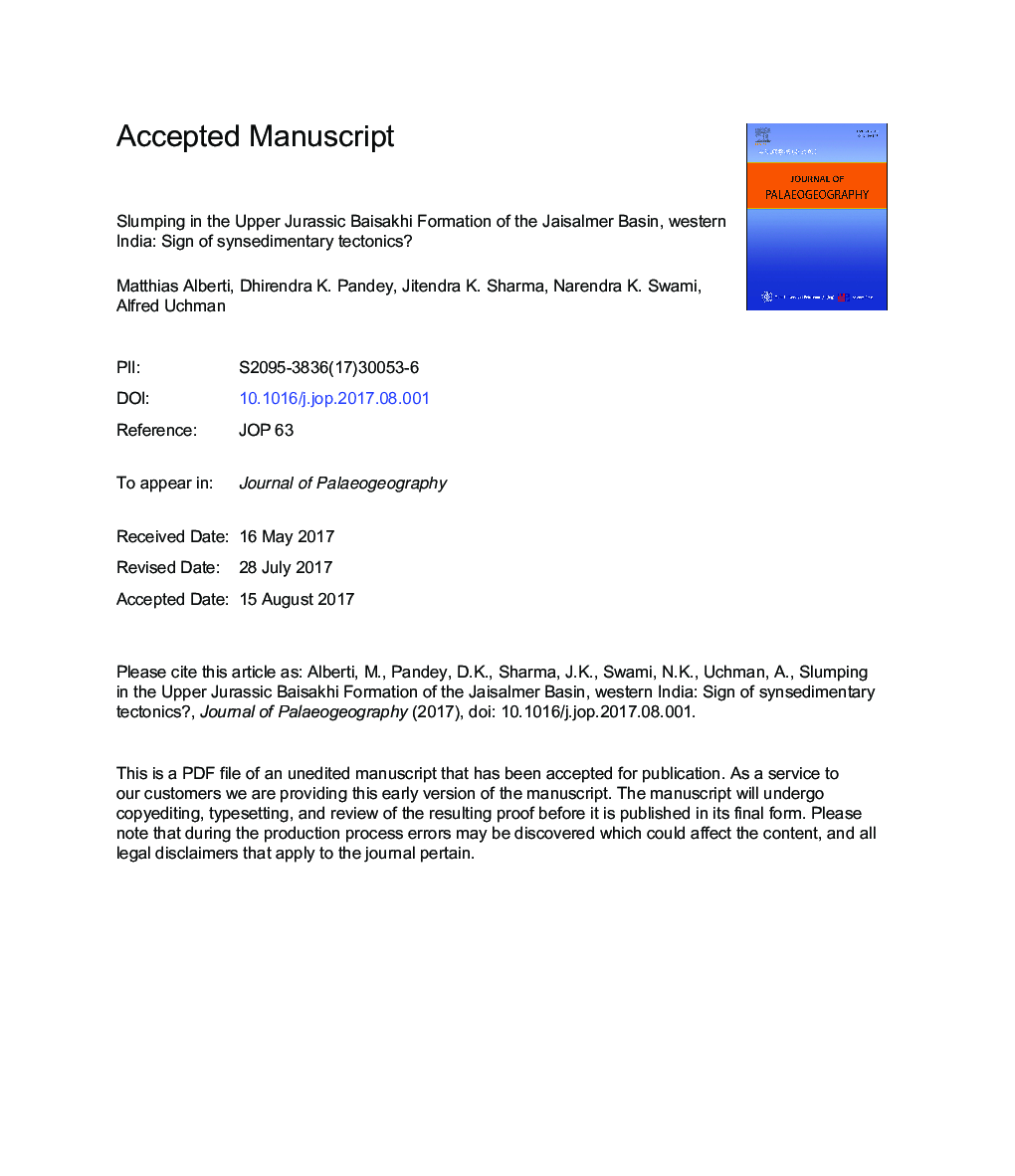| Article ID | Journal | Published Year | Pages | File Type |
|---|---|---|---|---|
| 8895331 | Journal of Palaeogeography | 2017 | 20 Pages |
Abstract
A spectacularly exposed slump is described from a 120-m-long road cut between the villages of Kanod and Deva in the northeastern Jaisalmer Basin of Rajasthan, India. The Upper Jurassic part of the sediments at the outcrop was formed in a near-shore setting and belongs to the Ludharwa Member of the Baisakhi Formation. The 3-m-thick unit shows a number of asymmetric folds and thrust faults leading to an imbrication of partly lithified sandstone beds. The deformation structures allow the reconstruction of a movement towards the northwest. This agrees well with the basin configuration that shows a deepening into this direction. Although the determination of a specific trigger mechanism is difficult for soft-sediment deformation structures, an earthquake caused by synsedimentary tectonics in the basin seems to be the most likely explanation.
Related Topics
Life Sciences
Agricultural and Biological Sciences
Soil Science
Authors
Matthias Alberti, Dhirendra K. Pandey, Jitendra K. Sharma, Narendra K. Swami, Alfred Uchman,
